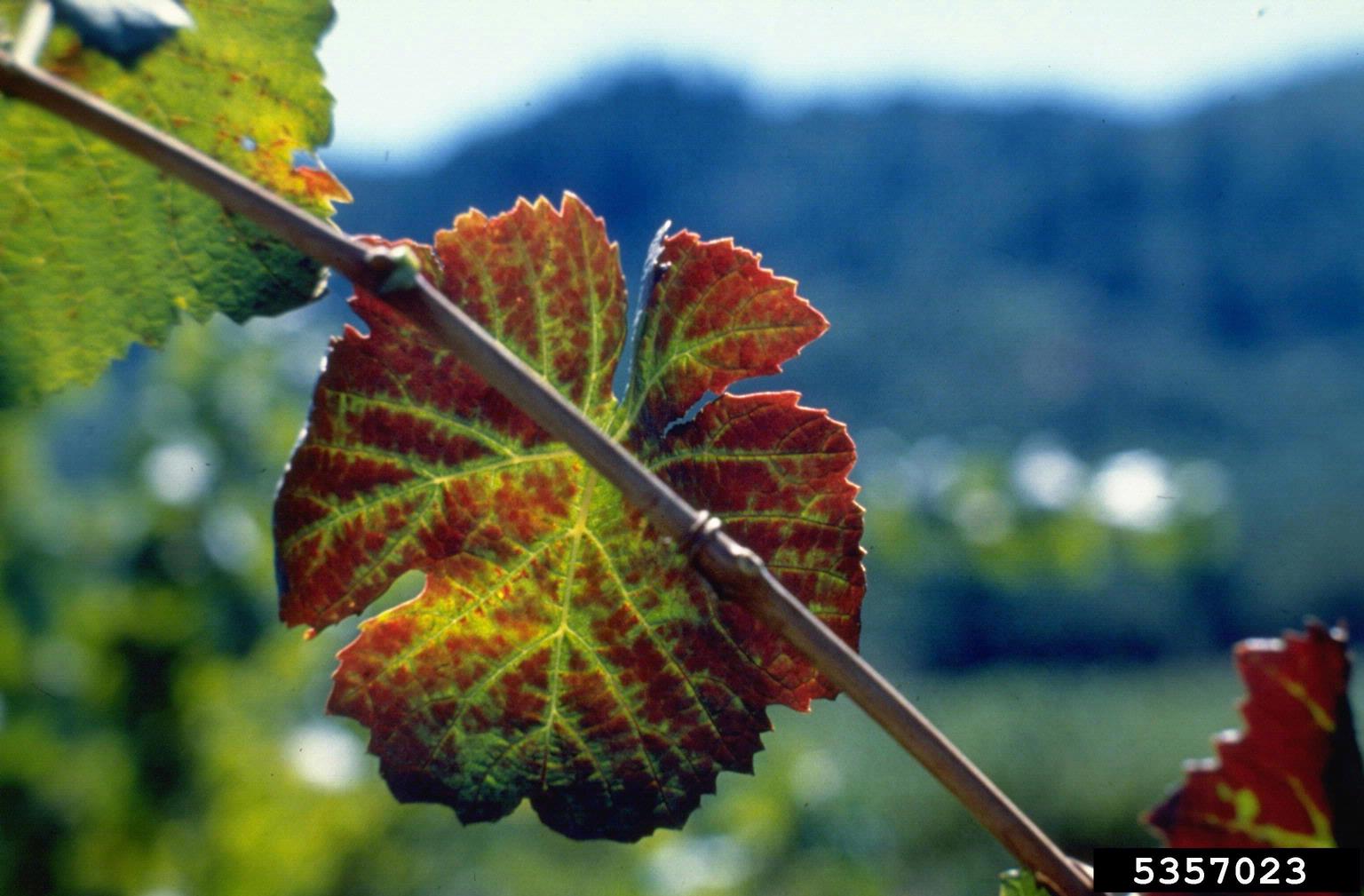GVCV Information: What Is Grapevine Vein Clearing Virus


When it comes to growing grapes, the options are limitless. While many gardeners choose to grow vines for fresh eating, others may seek out varieties more specifically suited for use in wines, juices, or even jellies. Although there are a plethora of options in terms of type, many of the same issues may afflict vines. Preventing and identifying specific causes of grapevine decline is the key to bountiful harvests of homegrown grapes. This article focuses on grape vein clearing virus (GVCV) information.
What is Grape Vein Clearing Virus?
Over the last few decades, occurrences of vein clearing of grapes have appeared in the United States, across the Midwest and in parts of the South. Though the decline in health of grapevines with vein clearing virus may not be immediately noticeable, plant growth may become stunted over time. Additionally, grape clusters produced may be reduced in size, misshapen, or even have undesirable textures. One of the most noticeable and obvious vein clearing symptoms occurs in the veins of grapevine leaves. Foliage of the plants begin to take on a yellow, almost clear appearance. It’s important to note that this may not occur on all the leaves. Additionally, there may be other foliage-related abnormalities present which may signal a decline in plant vitality. Among infected vines, growers may notice that new leaves are much smaller, may be deformed, show signs of yellowing, and/or have a crinkled-like appearance. Foliar issues usually appear first in young leaves, and later, affect the vine as a whole.
Preventing Vein Clearing of Grapes
While the cause of this grapevine virus is not yet completely clear, there are some ways in which to avoid infected plants. Some evidence suggests various insects may play a role in the transmission of the virus from plant to plant, but studies have not yet determined which pests may be responsible. Keep your plants weed free to avoid unwanted pests from the area and apply organic pesticides, like neem oil, when necessary. Grafting and grapevine propagation through infected stem cuttings are common means by which the virus is quickly spread within vineyards. Make sure that all propagation tools are well sterilized and choose only the healthiest looking cuttings for rooting or grafting. Even though there are some varieties of grape that demonstrate an apparent resistance to GVCV, ensuring that purchased and propagated plants are disease-free is the best form of prevention.
Gardening tips, videos, info and more delivered right to your inbox!
Sign up for the Gardening Know How newsletter today and receive a free copy of our e-book "How to Grow Delicious Tomatoes".

Tonya Barnett has been gardening for 13 years. Flowers are her passion. She has transformed her backyard into a cut flower garden, which she regularly chronicles on her YouTube channel http://www.youtube.com/@tonyawiththeflowers.
-
 Create A Romantic Garden Straight Out Of Bridgerton: Regency Era Romance In Your Garden
Create A Romantic Garden Straight Out Of Bridgerton: Regency Era Romance In Your GardenTry some romantic garden ideas straight out of Bridgerton. Flowers and gardens in the Regency era were lush and charming and you can get the same look!
By Bonnie L. Grant
-
 Moody Blooms For Spring: 8 Types Of Black Flowers To Add Drama To Spring Displays
Moody Blooms For Spring: 8 Types Of Black Flowers To Add Drama To Spring DisplaysFrom midnight burgundies to inky violets, several types of black flowers can enrich and embolden a spring display. Try these brooding bloomers for a moody garden
By Tonya Barnett